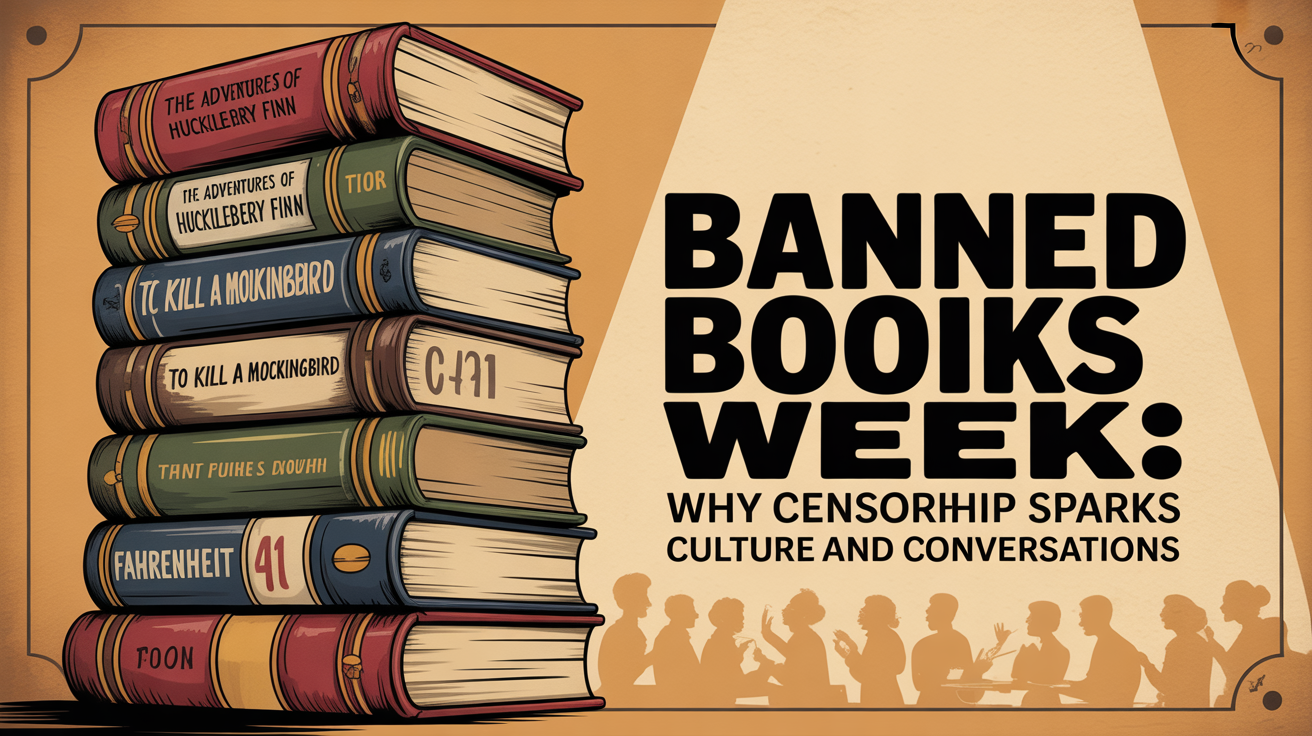
Banned books week: what it is and why it matters
Every year, people around the world mark Banned Books Week, a powerful movement that shines a spotlight on books challenged or banned due to their content. For Gen Z, millennials, and social media creators hungry to stay on the cultural pulse, this week is more than just a reminder—it’s a call to action. It challenges us to explore controversial stories, question authority, and celebrate freedom of expression. In this article, we’ll dive into the significance of banned books, why they keep showing up on censorship lists, and how you can join the conversation to stay relevant and even create viral content around this cultural phenomenon.
The history and rise of banned books week
Banned Books Week started in 1982 as a response to increased attempts by schools, libraries, and communities to censor certain books—often those touching on race, sexuality, or political views. Over the years, it has grown into an important cultural event that highlights the tension between protecting young minds and restricting access to diverse perspectives. Interestingly, many titles originally banned have become classics precisely because they sparked dialogue and helped society confront uncomfortable truths.
For fast-moving culture enthusiasts and social media creators, understanding this background reveals why banned books are more than relics of controversy—they’re essential touchpoints in ongoing debates about identity, freedom, and representation.
Why books get banned: themes that challenge the status quo
Books make people uncomfortable for many reasons:
- Sexuality and identity: Stories featuring LGBTQ+ characters or themes often appear on banned lists from the American Library Association.
- Race and social justice: Titles addressing systemic racism or police brutality are challenged by groups wanting to suppress conversations around inequality.
- Political views: Books with critiques of government policies or historical perspectives that challenge dominant narratives can be censored.
- Mature content: Language, drugs, violence, or controversial family structures also trigger bans, often justified as protecting youth.
These themes resonate deeply with Gen Z and millennials because they reflect ongoing cultural shifts and social movements. Sharing and discussing banned books on social media fuels viral conversations and fosters a sense of being on the frontlines of change.
How banned books week fuels social movements and creative content
For creators and culture enthusiasts, Banned Books Week offers a treasure trove of inspiration. Leveraging awareness around banned books can:
- Drive viral trends: Hashtags like #BannedBooksWeek and #ReadBannedBooks trend annually, inviting creators to share reactions, reviews, and personal stories.
- Build community: Book clubs, online panels, and live streams create spaces where audiences engage in meaningful debates, supporting marginalized voices.
- Encourage activism: Highlighting censorship encourages audiences to take a stand for intellectual freedom and allyship.
Besides content ideas, understanding the books themselves adds depth to the conversation. Sharing profiles of banned books and their censorship reasons helps deepen cultural literacy, making posts more shareable and insightful.
Most challenged books: a snapshot
| Book | Author | Main reason for challenge | Year(s) banned/challenged |
|---|---|---|---|
| To Kill a Mockingbird | Harper Lee | Racial themes and language | 2010-2023 |
| The Hate U Give | Angie Thomas | Police brutality and language | 2017-2023 |
| Gender Queer | Maia Kobabe | LGBTQ+ themes | 2019-2023 |
| 1984 | George Orwell | Political viewpoint | Multiple decades |
| Harry Potter series | J.K. Rowling | Occult or witchcraft themes | 1999-2023 |
Being part of the banned books conversation: how to join in
Want to jump into Banned Books Week with your audience? Here are some approaches perfect for fast-paced creators:
- Create quick, punchy videos highlighting a banned book and why it matters.
- Host Instagram or TikTok live sessions to discuss censorship’s impact and share personal stories.
- Curate a banned books reading list and invite followers to participate and share thoughts.
- Use eye-catching visuals and quotes from banned titles to spark curiosity and conversations.
- Collaborate with bookshops, authors, or activists for giveaways or interviews.
Remember, reflecting on banned books is not just about controversy—it’s about planting seeds for understanding and empathy in a rapidly evolving cultural landscape.
Conclusion: why banned books still ignite culture and conversation
Banned Books Week remains a crucial cultural moment that reminds us: stories have power. They challenge norms, open minds, and sometimes scare those in control. For the fast-moving, curious audiences of Gen Z and millennials, banned books represent the pulse of social change and opportunities to engage authentically with important topics. From racial justice to LGBTQ+ rights, these titles shed light on what society grapples with today, making them perfect for viral, meaningful content. Whether you’re a creator, a reader, or just someone hungry for the latest cultural shift, celebrating banned books means championing expression and staying boldly relevant.
So this Banned Books Week, don’t just scroll—read, share, discuss, and take your place in a conversation that matters. After all, as Ray Bradbury famously said, “You don’t have to burn books to destroy a culture. Just get people to stop reading them.”
